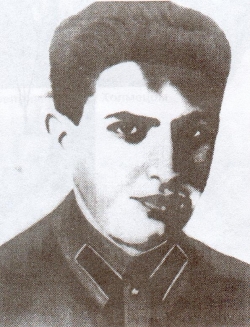Abram Levin was born in Kiev. His father Isaak was a driver, while his mother Rebecca was a seamstress. The Levin family later moved to Moscow. After finishing school, Abram entered a technical school for auto-mechanics, from which he graduated in the summer of 1941, at the time of the outbreak of the Soviet-German war. Immediately after his graduation, Abram Levin could have been evacuated to the Soviet rear with his Moscow automobile factory. However, he did not accept such an exemption and volunteered for frontline duty. He served in the Moscow Infantry Division. In the winter of 1942, fierce fighting was taking place around Moscow. In one such battle during the Rzhev-Viazma Operation, in late February 1942, Abram Levin was killed, having blocked the gun port of an enemy bunker with his body. He was buried in a common grave near the city of Rzhev.
A year later, a similar feat performed by the 19-year-old Aleksandr Matrosov became known to the whole country. Matrosov was posthumously awarded the title of Hero of the Soviet Union.
The case of Levin did not receive the same kind of broad publicity in the USSR. Furthermore, he was in no way honored, despite the fact that the head of the political department of his division had reported his feat to the higher authorities. Only 25 years after his death did Abram's mother succeed in receiving the Order of the Patriotic War, 1st Class, in her son's name. Forty years after the battle in which Abram Levin fell, a sculpture was erected atop the common grave.







